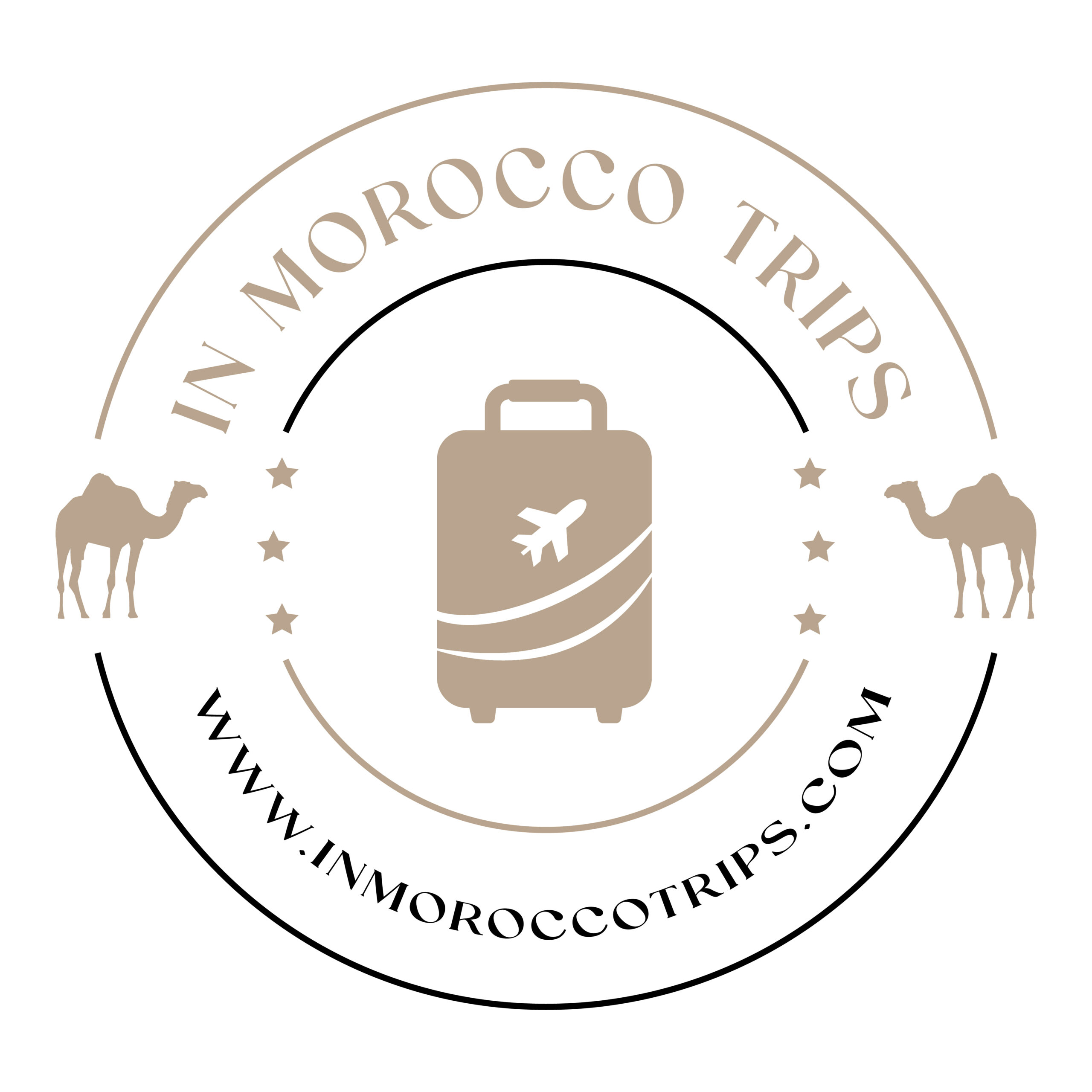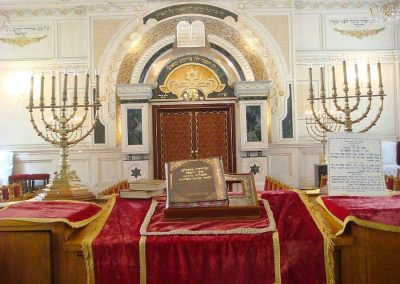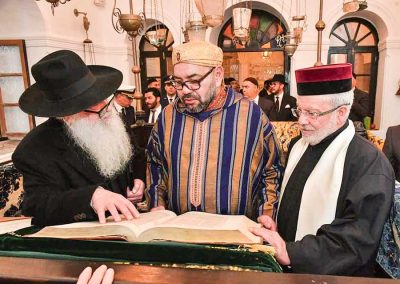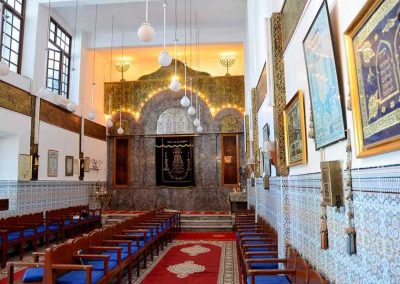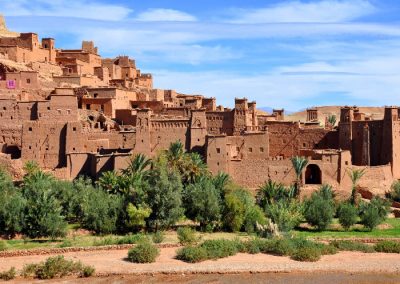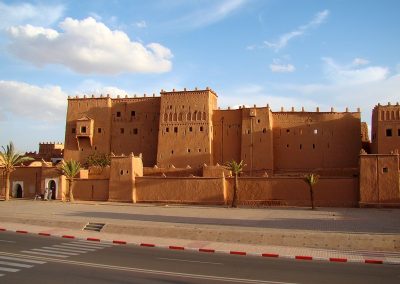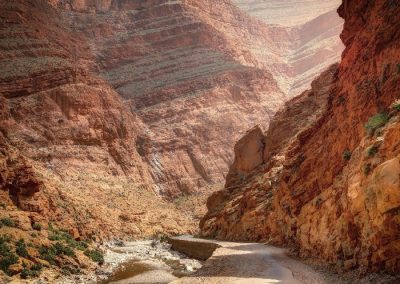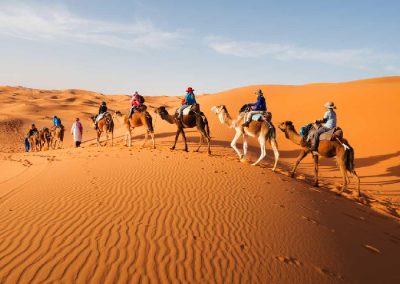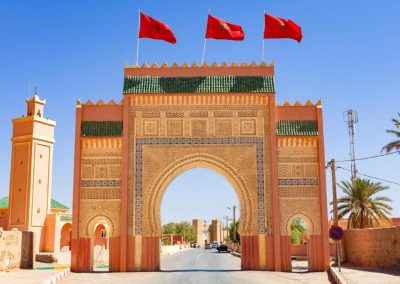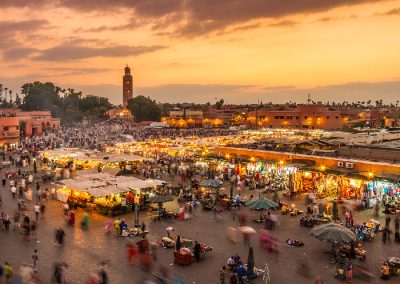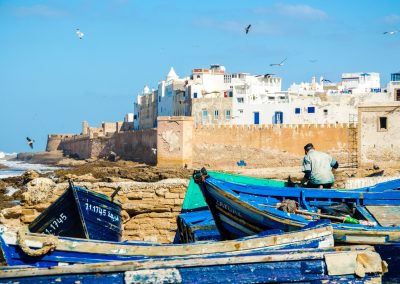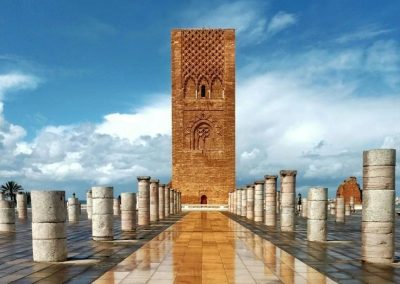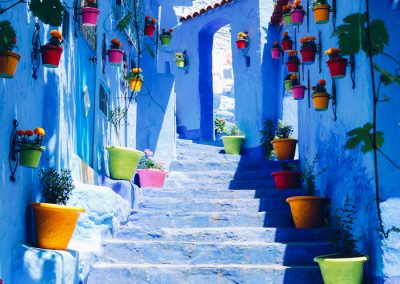12-Day Morocco Jewish Heritage Tour / Jewish Memory
12-Day Grand tour in Morocco to explore the Jewish Heritage
Mellahs, Synagogues, & Jewish Cemeteries
Starting Location
Casablanca/Airport or Accommodation
Starting time
Around 08:00 am
Tour’s Duration
12 Days
Ending Location
Casablanca/Airport or Accommodation
Introduction: Discovery Tour of the Morocco Jewish Heritage
Jewish has been a part of Moroccan history and played an important role in building today’s Morocco. Morocco is an exceptional Arabic-speaking country that has a huge Jewish Community all over the world and in Israel as well. Also, it’s a good example of religious tolerance and cultural maintenance. Over several years, Morocco still preserves several synagogues, and Jewish Cemeteries, and preserves the Jewish culture. And for those who want to discover the Morocco Jewish Heritage, we present you this 12-day tour from Casablanca to most cities where Jews have been settled.
Overview of the Morocco Jewish Heritage Tour: Synagogues, Jewish Cemeteries, & Mellah
This 12-day Morocco Jewish Heritage tour is the perfect way to explore the Jewish history and culture of Morocco. This journey will take you to the main cities of Morocco, including Casablanca, Rabat, Chefchaouen, Fes, Seffrou, Merzouga, Todgha Gorges, Ouarzazate, Marrakech, Essaouira, Safi, and Eljadida. Visit the Museum of Moroccan Judaism in Casablanca, various synagogues, the Chellah, the Jewish Quarter of the old Medina in Rabat, the Jewish cemetery in Meknes, the Bab Guissa in Fes, the New Mellah in Meknes, the Volubilis, the Shoura Tannery, the Qutoubia Mosque, the Ait Ben Haddou Kasbah, the Place des Fleblantiers in Marrakech, the Mogador Kasbah in Essaouira, and the old Portuguese fort in Eljadida.You will also learn about the Jewish community in each city, explore the Jewish quarter, visit Jewish cemeteries, and experience Jewish culture through food, music, and literature. Discover the beauty and diversity of Morocco’s Jewish heritage and experience the rich culture and history of this fascinating country.
Highlights of the 12-day Morocco Jewish Heritage Tour: Synagogues, Jewish Cemeteries, & Mellah
- Visit the Museum of Judaism in Casablanca to learn about the history of Jews in Morocco
- Explore the old Medina and Mellah of Casablanca
- Visit the Chellah in Rabat, an important site for the Jews
- Explore the blue city of Chefchaouen and its Jewish community
- Take a guided tour of Fes to learn about the Moroccan Jewish Heritage
- Walk through the narrow alleys of the old Medina ‘Mellah’ in Fes
- Visit Seffrou, known as “Little Jerusalem”
- Visit the Mellah Quarter in Seffrou
- Experience camel trekking and desert activities in Merzouga
- Explore Todgha Gorges and Ouarzazate
- Discover the Jewish Heritage in Marrakech
- Stroll the old Medina in Marrakech ‘Mellah’ (Jewish Quarter)
- Explore the city of Essaouira and its Jewish community
- Visit Safi and Eljadida to learn about their Jewish community
- Visit Jewish Cemeteries, Synagogues, and Mellah of each city if there is one
Morocco Itinerary Program: Discover the Morocco Jewish Heritage and Jewish Community in Morocco
Day 1: Visit the Museum of Judaism in Casablanca / Jewish Population in Morocco
After meeting you in Casablanca, the economic capital of Morocco and the largest city, we will start our Morocco Jewish Heritage tour. We will divide the tour of today into two parts; the first one will focus on a tour of the main attractions of the city including the famous Mosque of Hassan II and the Kornich part.
Moroccan Judaris Museum, Synagogues, and Mellah
On the second part of the city tour, we will program a visit to the Museum of Moroccan Judaism in Casablanca, which is the only museum of its kind among the Arab countries. The Jewish population in Casablanca reaches 3000 Jewish residents. There’re over 30 synagogues and several Jewish/Hebrew Medrassas in the city. The museum presents the Moroccan Jewish heritage. The Jewish Heritage can be seen also in the music and literature of the Jews inhabitants. The museum is a good example of Moroccan religious tolerance. We will also visit various synagogues in the city including Benrrosh Synagogue, Em-Habanime Synagogue, and Tehila Le David Synagogue. Then, we will have a walking tour of the old Medina where we’re going to see the Jewish quarter ‘Mellah’. We spend the night in the old Medina at one of the hotels.
Moroccan Jewish Population in Casablanca: over 5,000 Jews
Day 2: Casablanca – Rabat – Chefchaoune
We’ll drive from Casa to the capital city ‘Rabat’, which stands by Hassan II Tower, the old Medina, and the Mausoleum Mohamed V. This city is to be an imperial Moroccan city with a UNESCO World Heritage Old Medina. Here in Rabat, we will visit the Chellah a site considered part of the UNESCO world heritage and a site where Jews lived for a dated time. The famous synagogue in Rabt is Rabbi Shalom Zaoui. Then, we continue driving through the beautiful mountains of Rif where the blue city of Chafchaouen is situated. The population of the Jews in Chafchaouen increased during the Spanish Reconquista when they were escaping from what was known as the Europe Jews’ persecution. Where thousands of Jews left their home against their will; Morocco at that time was the first country to open the gate for Jews and the first country to protect them.
Spend the rest of the day wandering the blue-washed narrow alleys of the friendly medina. Visit the walled fortress of the Kasbah contains beautiful gardens. Near it is the small museum and art gallery which houses the rich culture of the Rif Mountains. From the rooftop of the os, the blue and white washed exploring the medina, walk in the nearby hillsides with the magnificent waterfalls. The many native humane not available elsewhere in en blankets. The goat cheese Kasbah views a spectacular house, tiled roofs, and a tiny such as wool gas oven native to the area is also popular. Overnight in a Moroccan traditional Riad.
Moroccan Jewish Population in Chefchaouen: There were more than 7000 Jews but today there is less than 10 Jewish family
Day 3: Chefchaouen – Meknes – Fes
Wake up in the morning in one of the cleanest cities in the world offering an inspiring atmosphere to take our breakfast and drive to Meknes City. Bab El Mansour, Moulay Idris Zerhoun, and more are historical spots that Meknes is famous for, and which we’ll certainly see after lunch. In Meknes, we will visit the Jewish Heritage that can be seen through the New Mellah; a new quarter built by the Jews who lived in Meknes. Nowadays, there are fewer than 100 Jews inhabitants in the city because they leave for another city in Morocco or because they leave for Israel. Also, we will see the Jewish cemetery that still stands and is considered one of the attractions in the city. We will have lunch before we drive to the Roman ruin of “Walili” -Volubilis-, great ruins with stunning scenery that will grape your attention when you are about to explore them. Also, a UNESCO World Heritage Site. The archeologists found the first traces of the Jews in Morocco here in Volubilis which is still preserved now; you can see some rocks has Hebrew words. To spend the night, we’ll proceed to Fes.
Moroccan Jewish Population in Meknes: over or less than 100 Jews
Day 4: Fes Guided tour: Moroccan Jewish Heritage tour in Fes
Today is dedicated to a guided tour of Fes to explore the Moroccan Jewish Heritage in Fes and the Jews community. Fes is considered to be the oldest city in Morocco that was built by Sultan Idriss I between 789 and 808 A.D. Fes is one of the imperial cities; that came after Marrakech. Fes has been the best city for the Jews where a large community settled in the city participating in their culture with comfort and they were supposed to be the first to practice commerce and worked in the leather industry. They played an important role in building the famous Chaoura Tanneries of Fes; the largest of its kind in Morocco. Jews lived in the old Medina also known as Fes El’bali, a UNESCO world heritage since 1981. Juadarism in Fes is presented through the heritage of Bab Guissa an old quarter in Fes El’bali nearby the famous Foundouk El-yhoudi (Jews in Morocco known as lihoud). Here Jews lived and died as we can see in the Jewish cemetery. Jews were known for their brilliance and they helped in raising awareness among the Moroccans in Fes. Today, Fes is the intellectual capital and the holy city in the kingdom. Both Jews and Muslims pilgrimage to Fes.
The Jewish Heritage in Fes is still now being protected for almost three centuries. We can find Jewish schools, buildings, and synagogues stands in the city’s Medina now. And that’s why Morocco is a great example of maintaining cultural and religious heritage. We will visit the Mellah, Jewish Cemeteries, and Bab Guissa. If you would like, we can have Jewish food for lunch at one of the Jewish restaurants in Fes.
Since we are in Fes, we will have the opportunity to visit its main attractions including the Qutoubia Mosque one of the oldest mosques in Morocco and it was a university at the same time; the oldest in the world. Visit the Shoura Tannery, Najjarin, and Bab Boujloud where you can buy a traditional product for the Moroccan Jewish Heritage tour’s souvenir. Overnight in your traditional Riad.
Moroccan Jewish Community in Fes: about 200 Jews
Day 5: Fes Day trip to Seffrou
After having our breakfast in the morning, we will go for a short journey to a small city in the south of Fes. Several Jews when they no longer felt comfortable in Fes left to live in Seffrou, a beautiful small town known as the ‘Little Jerusalem. In 1956 Safrou was considered to have the largest Jews population who were settled in the Mellah with over 8.000 settlers. Upon arrival, we will visit the old Jewish cemetery and walk through the narrow alleys of the old medina or Mellah but before that, we have to cross the small river of Aggai. Wherever there were Jews in a Moroccan city, there is good commerce. Safrou is known for producing cherries and it organizes the biggest Cherry Festival. We will have a walk in this beautiful city and take our lunch before going to see the impressive waterfalls in the river. Later, we head back to Fes where we will have dinner and spend the night.
Jewish Population in Sefrou: 8.000
Day 6: Fes – Ifrane – Azrou – Merzouga
Morocco is a rich country in terms of culture, history, and gorgeous landscapes. So, we will have a pause of the Moroccan Jewish heritage tour and head to the Sahara desert to live a different vibe away from the hassle and bustle of the big cities. Commence the trip in the morning to leave Fes for a drive through three of the middle -Atlas- villages, the valley of Ziz, and Merzouga. A stop at the Switzerland ‘Ifran City’, another at Azrou, particularly at the cedar forests that are famous for the Barbary Apes so as to feed them, and to take some pictures. For lunch, we stop in Midelt. Pass by the impressive Ziz Valley on the way to Merzouga Desert where we will spend the night in a hotel.
Day 7: Explore THE Merzouga Desert
Wake up in the morning to prepare ourselves to experience camel trekking and desert activities. We’ll rather visit the area along with the “Gnaoua” village -Khamlia-. Meet Gnaoua people that are known for their unique type of music where drums are an essential tool they are using. Experience climbing on the top of the camels to ride over Erg Chebbi camp at the high dunes watching the sunset and getting ready to spend a night in a tent under the starry sky around a small fire in one of the best romantic moments.
Day 8: Merzouga – Todgha Gorges – Ouarzazate – Marrakech
Today we leave the desert. When the sun is rising at the top of high dunes, it creates a magical scenery worth waking up earlier to observe it. Take your breakfast and go with the camels to the hotel for a shower and then continue to Todra Gorges. They are spectacular limestone river canyons to discover and appreciate their beauty. Leave for Ouarzazate (the Hollywood of Africa). We will drive after having breakfast via the route of 1000 Kasbahs. You can ask the driver to stop for visiting the old Kasbahs in the palm groves.
On your way, you will enjoy the Rose Valley and the beautiful smells. Upon arrival in Ouarzazate, you can start your visits to the studios where several international movies were shot such as Gladiator, and Game Of Thrones. Also, you can visit the southern town, to discover the old beautiful buildings with clay architecture. Lunch here. Continue your drive south to reach the UNESCO-listed Ait Ben Haddou Kasbah. Take a stroll around the Kasbah and explore its ancient mud buildings and nearby movie sets. Later, we leave for Marrakech which we will reach in the late afternoon. Overnight in a Moroccan traditional Riad.
Day 9: Marrakech Jewish Heritage Guided Tour
Continuing our Morocco Jewish Heritage Tour in Marrakech. Red City in Morocco is another city to explore Jewish History in Morocco. Even if several Jewish families left Marrakech, there still some families live in the Mellah Quarter (a Jewish Quarter). We will visit the Place des Fleblantiers, a site known for its Jewish community, and it’s the gate to the Mellah. Our guided tour in Marrakech will allow us to see old houses has Hebrew inscriptions and visit the synagogues of the Medina such as Lazama and Fasiines. Marrakech is one of the top commerce cities in Morocco where there are big traditional souks and handicrafts productions, and Jews participated in the Marrakech commerce. You will enjoy walking among its narrow alleys which connect the medina’s quarters. The Jewish Cemetery also can be found in the Mellah.
As we’re in Marrakech, we will visit the most attractions of the city including the Koutoubia Mosque, Mennara, Majorelle Gardens, and spend the late afternoon in Jamaa El’fna known for its panoramic view at night where you can find storytellers, snake charmers, traditional music shows, and kiosks of delicious food. Overnight in your riad.
Moroccan Jewish Population in Marrakech: over 200 Jews
Day 10: Marrakech – Essaouira
Through our Morocco Jewish Heritage tour, Essaouira is another city worth visiting to learn about the Morocco Jewish community. We will wake up in the morning to have our breakfast and leave for Essaouira which is situated on the coastal line. Jews in a dated period were known for participating in the Marchant activity with Europe. Sultan Ben Abdellah al-Khatib is the one who encourage Jews and helped them to live in Essaouira. From the Jewish Heritage that can be found in Essaouira, we can find the Mellah quarter, old synagogues, and Jewish cemeteries. What’s obviously seen in the Moroccan Jewish heritage is that Jews have been always settled in the most strategic and important cities of Morocco. Essaouira is a UNESCO site since 2001, very famous for the Mogador Kasbah. It’s considered to be over 40% of Jews in Essaouira before they left for Israel. After discovering this charming Moroccan Jewish city, we will relax at one of the hotels overlooking the sea.
Moroccan Jewish Population in Essaouira: arround 10,000 Jews
Day 11: Essaouira – Safi – Eljadida
After having your breakfast, leave Essaouira and head to Safi. Safi or Asafi is known for its marvelous beaches and panoramic views. You will visit the old Medina, and explore the souks. For the Jewish, Safi is the must-see of the Jewish heritage in Morocco. You will visit the old Jewish quarter, the pottery workshops, and the historic architecture.
Later, we head to El’Jadida and explore the old Portuguese fort. Visit the old town and take a guided tour of the city. Enjoy a delicious dinner and then spend the night relaxing on the beach at one of the luxurious hotels on the beach.
Moroccan Jewish Community in Safi: There were 20% Jews of the whole inhabitant’s population before most of the Jewish families left to live in France, Canada, and Israel.
Day 12: Eljadida – Casablanca
On the final day of our grand tour in Morocco to discover the Jewish Heritage and Jewish community, we will leave after breakfast for Casablanca city. If you have more time in Morocco, we can have a last guided tour of the Medina. Drop you off at the airport will be the end of our services and the end of the 12-day Morocco Jewish Heritage tour from Casablanca.
Tour Include :
- English-speaking driver
- Private 4×4 with AC
- Accommodation
- Desert Camp
- Camel trekking (1 for each person)
- Sandboarding in the dunes (if you’re interested)
- Fuel
- Marrakech tour guide
- Fes tour guide
Not included :
- Flight ticket
- Drinks
- Lunches
- What is not mentioned in the itinerary
- Entrance to the monument
All the above-mentioned are not included in the price.
